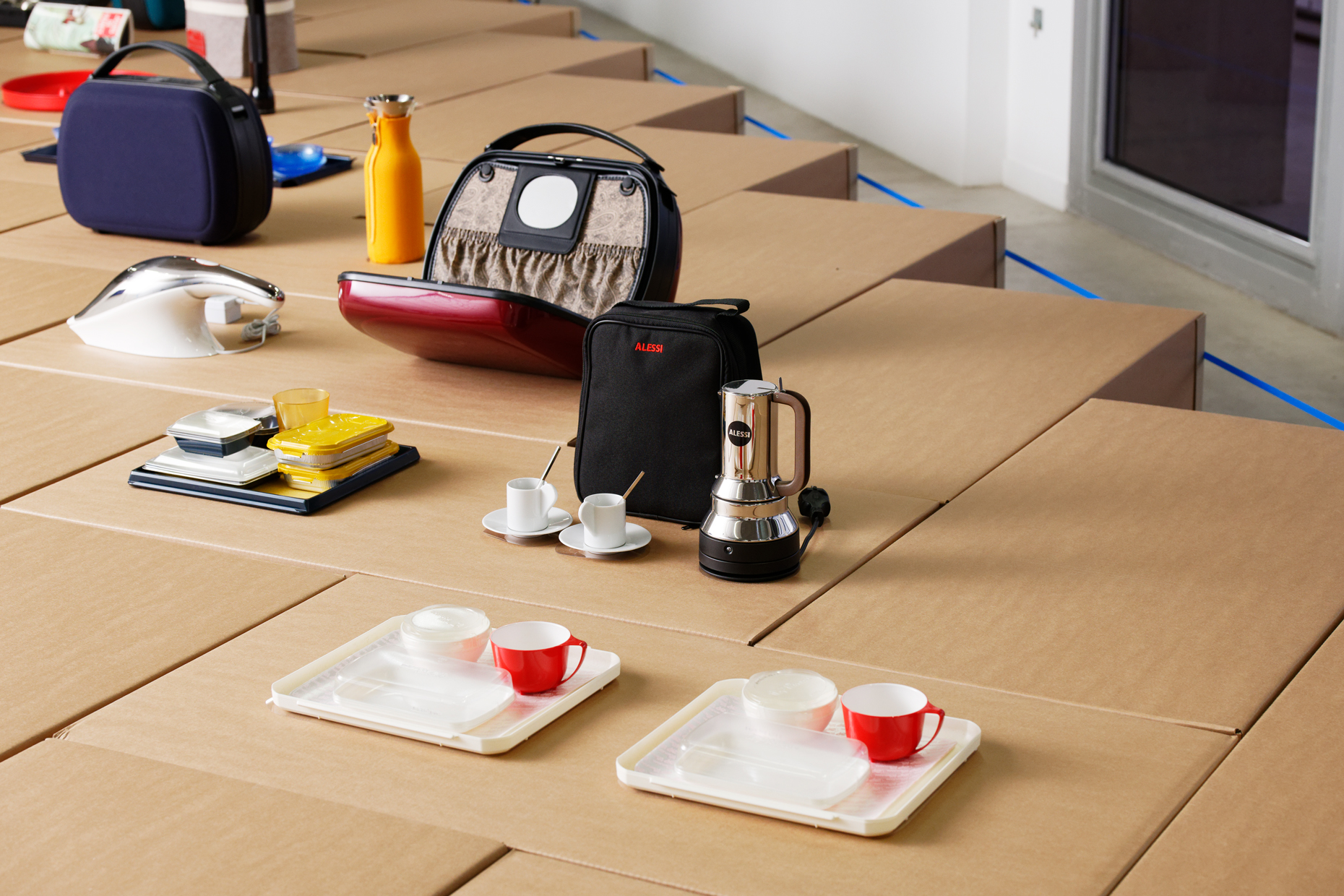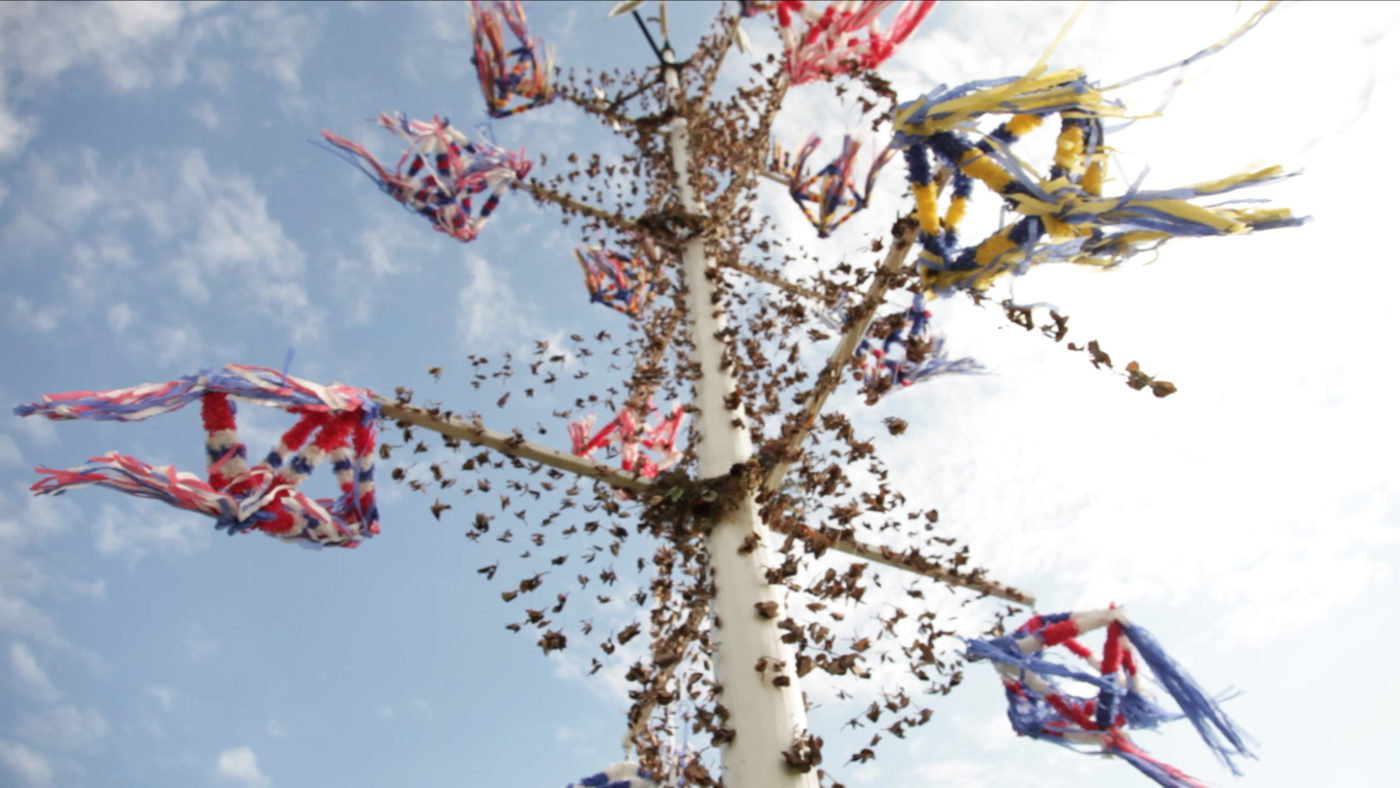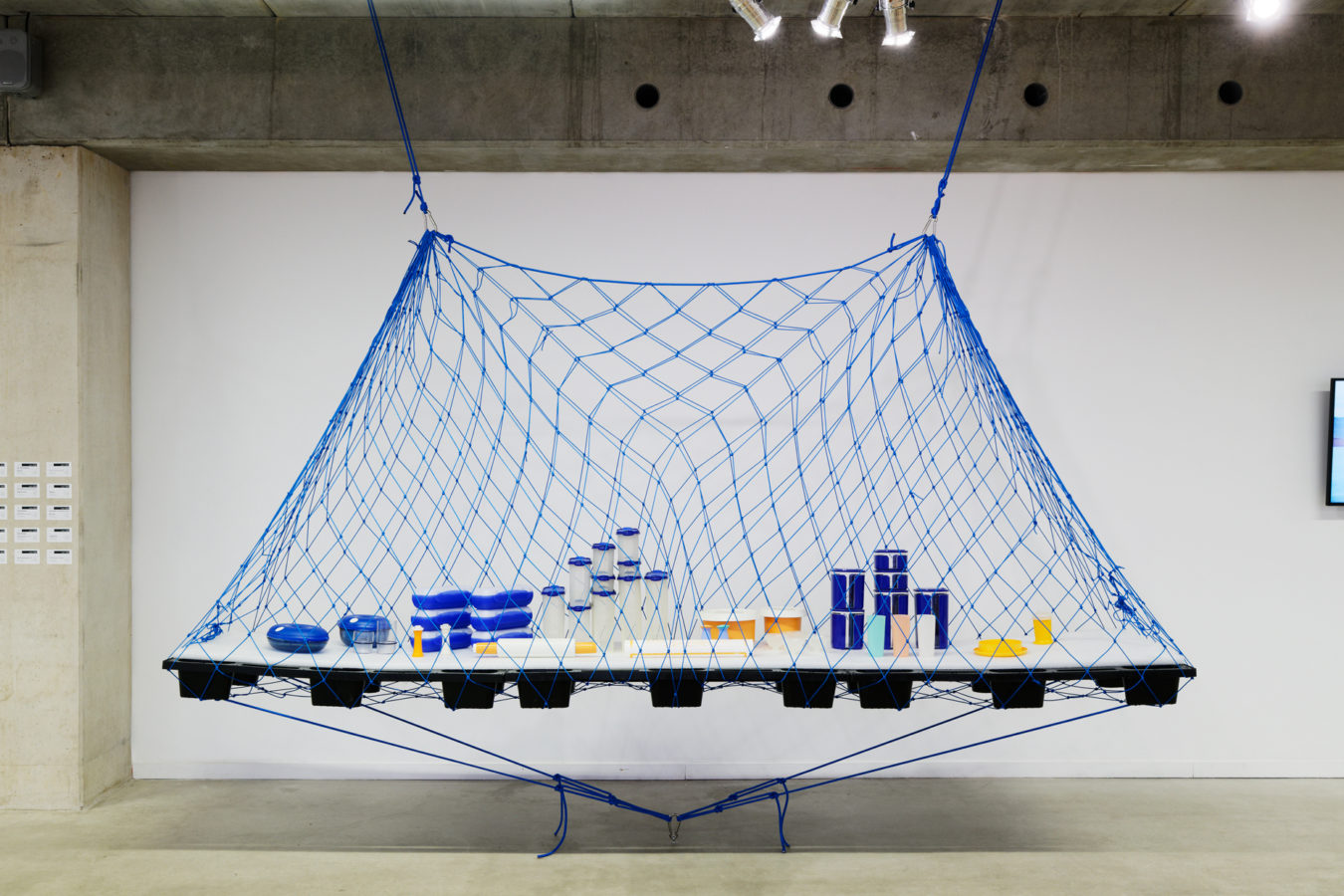Ship of Fools: Objects as Partners in Transport
02.04.2022 — 31.12.2022
Frac Grand Large — Hauts-de-France

An exhibition curated by Mathilde Sauzet with designer Julien Carretero
With : matali crasset, Panamarenko, Allan Sekula, Robert Stadler Studio Swine, Andrea Branzi, Wendy Boudewijns, Vic Cautereels, Pieter de Coster, Bob Daenen, Siegfried De Buck, Sonia Delaunay, Joël Dely, Nora De Rudder, Martino d’Esposito, Thierry d’Istria, Nathalie Du Pasquier, Jean Dupuy, Nedda El-Asmar, Myriam Garouche, Stefano Giovannoni, David Grosemans, Alessandro Guerriero, Zaha Hadid, Patrick Hoet, Henrik Holbaek, Hans Hollein, Armin Homolka, Richard Hutten, David Huycke, Toyo Itō, Claus Jensen, Vincent Jousseaume, Pascal Koch, Chris Koens, Anne Marie Laureys, Jean Lemmens, Anthony Maglica, Marc Melis, Alessandro Mendini, Annie Michaud, Miriam Mirri, Lüder Mosler, Jérôme Olivet, Guido Ooms, Gaetano Pesce, Erik Sijmons, Rolf Sachs, Richard Sapper, Sem Schanzer, Amie Siegel, Bořek Šipek, Philippe Starck, Adriano Stucchi, Matteo Thun, Antoine Van Loocke, Roderick Vos, Dirk Wynants, Baptiste Ymonet, Marco Zanuso
In this fictional tale of a miraculous draught of fishes on the seventh continent, Ship of Fools: Objects as Partners in Transport brings together various odd objects from the Design Museum Gent collection, together with a selection of films and other works by artists.
The exhibition focuses on the transport craze – the steadily evolving mobility of objects, materials and people – from the 1950s up to the present day. A contemporary echo of Hieronymus Bosch’s late-medieval Ship of Fools, the Frac Grand Large event depicts the possible end of our opulently materialistic societies. Sacrifice or rescue?
TRANSPORT: LOSS OF MEANING AND VITAL QUEST
Let’s consider an act of madness particular to humans: a yearning for transport. This frenzied desire for exoticism, weekends away, trips, export objects, and the frantic pace of our everyday lives, the sancti-fication of cars, aeroplanes, and rockets.
Originally the notion of “transport” was associated with strong emotion. The amorous transports of medieval literature called on the potent desires of courtly love, the magnetism of the muses and troubadours, the passionate feelings behind heroic sagas. Later, around 1650, “transports of the brain” described the hysteria and delirium caused by fever. Transport incarnates a disrupted state of being, far beyond displacement. Scarcity of fuel, mass migration, epidemics, border closures: what we are actually facing is a displacement crisis. Should our transport needs be called into question? The passengers of the Ship of Fools are eating, playing and singing; a feeling of unease emerges from their trance. Over the centuries, the story of this boat has continued to signal a loss of meaning and new vital quests.
THE LATE MIDDLE AGES ACCORDING TO BOSCH AND BRANDT
The painting by Dutchman Hieronymus Bosch and the text by the German humanist and poet Sebas-ian Brandt that this exhibition refers to are both called Ship of Fools. Dating from around 1500, they conjure up a period of transition towards a new society: the passage from the Middle Ages to the Renaissance, a period of crisis and of moral, social and aesthetic break-down. In Bosch’s picture the ship stands for a means of escape in the tradition of such parables of the Flood as Noah’s Ark. In a makeshift boat, a handful of alienated men and women set sail in the hope of a miracle or another reality. The story of the Ship of Fools represents both a way out and an imprisonment.
In the Middle Ages madness was an admissible subject for painting: Bosch, for example, devoted a number of pictures to human derangement. At a time when religion was losing its hegemony owing, among other things,
to scientific advances, pagan and vernacular beliefs were multiplying and giving rise to fantastic imaginings and anguish with regard to the underworld. In Bosch’s landscapes, angels rub shoulders with chimeras, sea monsters and spectres; in the midst of this disorder, humans must find the meaning of their passage on Earth. Now in the Louvre, Bosch’s Ship of Fools has been reproduced on a flag at the Frac Grand Large; the ship’s spirit will float through the exhibition like a ghost.
THE DESIGN MUSEUM GENT COLLECTION
The objects making up the Design Museum Gent collection embody both concrete transport, moving from one point to another, and perspectives of transformation, transition and translation, passages from one state to another.
A Pinocchio funnel, a mirror screen, a chrome toaster, travel clocks and alarm clock, a silver centrepiece in the luxury liner silver tradition, a collection of food cans, spoons, ladles and knives, a bath-tub, a radio, a TV set, two bedside lamps embellished with bird’s wings, a silver condom holder, ties with virus and explosion patterns, an orthopaedic prosthesis, a baby’s plastic drinking glass, a thermos flask covered with faux fur – and the list goes on.
The objects in the collection were each selected for their narrative and semiotic functions – objects as signs. And for their style. The group was compiled based on contrasts and heterogeneities. The objects show their uses and reveal tensions and desires, humour, joy and creative freedom, and already the absurdity, obsolescence, kitschness and unawareness of the mores of the second half of the 20th century. Once brought into interac-tion, their eclectic aesthetics reflect the complexity of our relationships with materiality and its contingent consequences for human societies. Items that are rare and precious yet with no speculative value, little shown in museums, these objects each have their reasons for being what they are. Their beauty lies in what made them a necessity for their creators and users at a given point in time.
FILMS AND IMAGES BY ARTISTS
A number of works by artists accompany and generate tension within the collection of objects.
It didn’t happen with us, yet. Safe Haven is a film by Chto Delat, the Russian collective of artists and activists. It is set on a Norwegian island identified by a political network as a “haven of peace” for artists whose lives and freedom of expression are under threat. In a story based on fact a poet, a woman artist, a curator, a philosopher and an activist arrived on the small island of Sula for a creative residency. The inhabitants welcome them onto their island, while being fully aware of the difficulty of creating when the voyage has a touch of exile about it. They explain their thinking on the subject eye to eye with the camera, while the visitors describe the political situation, recount their ideas and perform abstract gestures with the horizon as a backdrop. One foggy day, at the foot of a lighthouse, the issue of returning is raised: one after the other they intone, “stay far away” and “stay out there”.
This video echoes three other films and an audio work, each of which uses aesthetic singularity to address the imaginings and speculations that arise from the movement of humans and objects around the world. American artist Amie Siegel‘s Provenance focuses on an emblem of mid-century modernist design—the furniture designed by the Swiss architect Pierre Jeanneret for the buildings of Chandigarh, the controversial modernist city in India. Beginning with the furniture’s present circumstances as decoration in wealthy homes, the work then traces the furniture’s journey in reverse chronology through warehouses, on display at American and European auctions, at a furniture restorer’s, on a cargo ship, and, finally, back to their origins in Chandigarh. In their original context, these prized pieces function as everyday office furniture. Their migration as the spoils of modern design discloses the gulf between disparate settings, mapping the undercurrents of larger movements of capital.
In quite a different way, Studio Swine‘s film Sea Chair presents the shaping and recycling of materials, in this case waste recovered at sea and transformed into museum objects: a design approach more narrative than formalist. The film traces the process of manually fabricating stools out of melted plastic – one-off pieces produced from detritus netted with fishing catches or harvested at sea or onshore.
Salt in the veins by Italian woman director Vittoria Soddu documents a creative activity practised by members of an English choir: the performance of traditional sea shanties from different periods. Even removed from its real-life context of ship decks and harbours, this cultural heritage retains its great evocative power for its revivalists. The film unfolds with the songs and their staging , going from harmony to collective trance as the artist restores the age-old need to sing together against wind and tide.

Blanche Endive [White Endive] is the work of composer-conductor Gabriel Mattei, after a libretto by artist Grégoire Motte. Taking up themes central to Motte’s imagination, the composition is based on four intertwined stories: the invention of chicory stockings in 1942, the troubadour Jaufré Rudel and the Distant Princess, the transformation of nylon stockings into parachutes and the failed casting of beauty queen Miss Valenciennois’ leg. Performed by children from the Lille Centre Music School, this lyrical drama in four acts takes us on a journey to Antioch and finally back to a beach in Calais.
These objects from the Design Museum Gent collection are incor-porated into the very narrative of the videos and musical works – concern-ing exile, exploration and exploita-tion – as strangers and friends.
FILMS AND IMAGES BY ARTISTS
The group of featured artworks also includes Allan Sekula‘s photograph Ship of Fools Churn, from the Frac Grand Large collection, as well as matali crasset‘s Quand Jim monte à Paris [Jim Goes to Paris] and PANAMARENKO‘s Spar convenience store bag are also part of the ensemble.
Maurizio Nannucci’s historic piece Provisoire et définitif (Temporary and Permanent), created in 1996 for the inauguration of the Frac building when it moved to Dunkirk, is also part of the exhibition off-site as it will be installed on the façade of a building in the centre of the Degroote district, in the municipality of Teteghem-Coudekerque-Village, which is undergoing urban renewal. These two terms, which the artist used to name one of his mono-graphic exhibitions in Nice in 1992, bear witness to a duality present in every act of artistic creation: the work will disappear anyway and yet, because of its ephemeral material existence, it will endure through the impact it has on its environment. Does this reflection put forward by Nannucci apply to design objects and architecture? A postcard of a view of the instal-lation in Teteghem will conclude the exhibition in the Frac building and will open the visit outside the museum, towards the town of Dunkirk.
VISITING THE EXHIBITION
The presentation of the objects and the composition of the exhibition have been arranged according to three themes:
Vanity cases brings together a collection of objects designed for physical travel, from one place to another. A hip flask, egg boxes made from rigid plastic, a condom case: a heterogeneous collection of uses and aesthetics that tell us about the variety of motives and mores of transport. Evolving over the course of the 20th century, these objects serve as witnesses. Trunks and then bags have been replaced by wheeled suitcases. For those who have ever taken a flight, meal trays will remind them of food served in aluminium trays rather than the taste of escape. The travel alarm clock marked an era when no-one used a phone to wake them up. There was no transport without the presence of the clock; you are shown the time on the entrance wall as soon as you arrive. As for the TV, it doesn’t show the news anymore. Trips last a certain amount of time, and so do objects.
Kitchen tour brings us back home. This part of the exhibition deals with the companionship of objects in the domestic universe. Food processing and storage, tableware, children’s education, etc.: the kitchen is no longer just a functional room or a place of work. It gives us an insight into advances in technology and fashion. After the war, introducing objects mentioned on the radio into one’s personal environment became a way of participating in what was happening internationally: the popular advent of industrial design offered all Western populations an American way of life in their own home. Memories of the farm mingle with dreams of holidays by the sea, family heirlooms come face to face with special offers in the supermarket; handcrafted objects, whether raw or luxurious, rub shoulders with the archetypes of kitsch, creating a unique place in the home for the individual.
Self transports opens a reflection on the various ways to flee or to stand fast, to give in or to resist the urge to go somewhere else: the objects of this final selection repre-sent aesthetic and metaphysical circumventions of our state of here and now. They modify the senses, fill in the gaps, bring pleasure, soothe fears, and allow neuroses and desires to appear… They give shape to the upheavals that enrage us, madden us. In Hieronymus Bosch’s painting the Ship of Fools, the guests leave the coast taking with them a tree and the fruits of the earth, musical instruments and a full set of kitchen equipment. Feasting and singing lead them to dance and to go into a trance. Sink or swim? Both, captain. At the end of your journey through this exhibition, you will wonder who your transport companions are, and where they are leading you.
HOTEL DE LA PLAGE
To continue the experience of the “Ship of Fools”, the reflections on transport, value, mobility and the durability of material objects, we invite you to take a walk around Malo-les-Bains and to visit the Hotel de la Plage. Its owner, Stéphane Paganini, divides his time between his activity as a hotel owner and that of an antique dealer. In the entrance lounge and in the dining room, you can find numerous objects: art nouveau, 20th century craftwork and modern design. The exhibition drew inspiration from the atmosphere of this place and the many objects encountered at breakfast time, when research first began in 2019. Thank you to Mr Paganini for sharing the freedom with which he exercises his profession and the desire to make objects travel.
This exhibition is produced in association with Design Museum Gent.
With the support of Raja and Doublet
Date(s)
02.04.2022 — 31.12.2022
